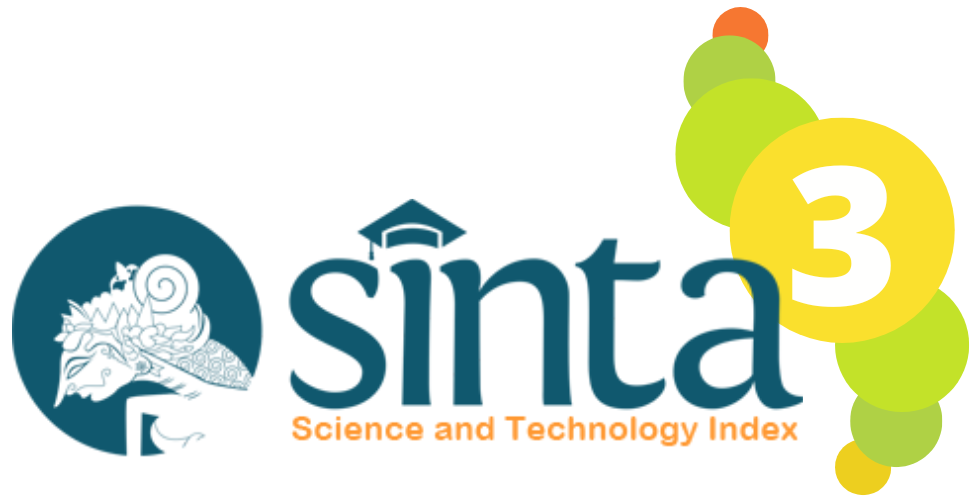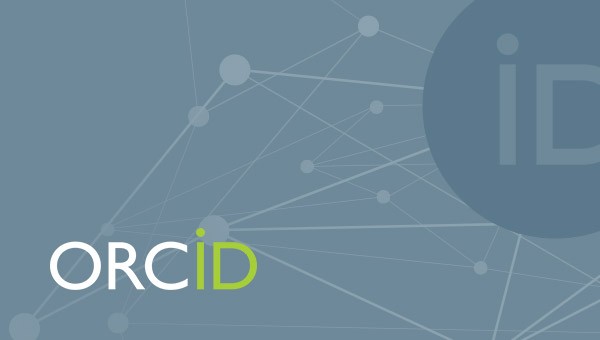Implementation of the 5E Model Integrated STEM-EDP to Enhance High School Students' Creative Problem-Solving Ability
DOI:
10.29303/jpft.v11i1.8717Published:
2025-05-16Issue:
Vol. 11 No. 1 (2025): January-JuneKeywords:
5E Model, STEM, Creative Problem Solving, Engineering Design Process, Renewable EnergyArticles
Downloads
How to Cite
Downloads
Metrics
Abstract
The improvement of Creative Problem-Solving (CPS) ability in physics learning still needs to be enhanced to prepare students for the challenges of the 21st century. This study aims to determine the effectiveness of implementing the 5E model integrated with STEM-EDP on high school students' CPS ability in the topic of Renewable Energy. This research was conducted at SMA Islam Global Surya using a quasi-experimental method with a pretest-posttest control group design. The sample consisted of class X-1 as the experimental group and class X-2 as the control group. The research instrument used was essay-type questions. The implementation of the 5E model integrated with STEM-EDP was found to be effective in improving students' Creative Problem-Solving ability. This is evident from the average N-Gain score of the experimental class, which was 0.56, higher than the control class with an average N-Gain score of 0.39. Additionally, this finding is supported by the results of the Independent Sample T-Test and Paired Sample T-Test, where the obtained Sig. (2-tailed) value was 0.00 < 0.05. Furthermore, the ANCOVA test results also showed a significance value of 0.00 < 0.05. The effectiveness of implementing the 5E model integrated with STEM-EDP in enhancing high school students' CPS ability in the topic of Renewable Energy falls into the high category, as indicated by the effect size test results, with a partial eta squared (η²) value of 0.434. This improvement is based on the Constructivism Theory and Behaviorism Theory, which allows students to build new knowledge by connecting it to prior experiences through interactions involving stimulus and response during the learning process.
References
Abdurrahman, A., Maulina, H., Nurulsari, N., Sukamto, I., Umam, A. N., & Mulyana, K. M. (2023). Impacts of Integrating Engineering Design Process Into STEM Makerspace on Renewable Energy Unit to Foster Students’ System Thinking Skills. Heliyon, 9(4), 1-12 DOI: https://doi.org/10.1016/j.heliyon.2023.e15100
Amran, M. S., Kutty, F. M., & Surat, S. (2019). Creative Problem-Solving (CPS) Skills Among University Students. Creative Education, 10(12), 3049-3058. DOI: https://doi.org/10.4236/ce.2019.1012229
Ardianti, S., Sulisworo, D., Pramudya, Y., & Raharjo, W. (2020). The Impact of the Use of STEM Education Approach on the Blended Learning to Improve Student’s Critical Thinking Skills. Universal Journal of Educational Research, 8(3), 24–32.
Bybee, R. W. (2014). The BSCS 5E Instructional Model: Personal Reflections and Contemporary Implications. Science and Children, 51(8), 10–13. DOI: https://doi.org/10.2505/4/sc14_051_08_10
Chen, P., & Chang, Y.-C. (2024). Incorporating Creative Problem-Solving Skills to Foster Sustainability Among Graduate Students in Education Management. Cleaner Production Letters, 7(100082), 1-9. DOI: https://doi.org/10.1016/j.clpl.2024.100082
Creswell, J. W., & Creswell, J. D. (2022). Research Design: Qualitative, Quantitative, and Mixed Methods Approaches. Thousand Oaks: SAGE Publications.
Davidson, P., Roslan, S., Omar, Z., Chong Abdullah, M., Looi, S., Neik, T. T. X., & Yong, B. (2019). Validation of Competing Structural Models of Inter-Relationships in the Teaching–Learning Ecosystem for Two Malaysian STEM Courses. Asia Pacific Education Review, 20(1), 15–36. DOI: https://doi.org/10.1007/s12564-018-9567-0
Di, C., Zhou, Q., Shen, J., Li, L., Zhou, R., & Lin, J. (2021). Innovation Event Model For STEM Education: A Constructivism Perspective. STEM Education, 1(1), 60–74. DOI: https://doi.org/10.3934/steme.2021005
Eroğlu, S., & Bektaş, O. (2022). The Effect of 5E-based STEM Education on Academic Achievement, Scientific Creativity, and Views on the Nature of Science. Learning and Individual Differences, 98(102181), 1-11. DOI: https://doi.org/10.1016/j.lindif.2022.102181
González-Pérez, L. I., & Ramírez-Montoya, M. S. (2022). Components of Education 4.0 in 21st Century Skills Frameworks: Systematic Review. Sustainability, 14(3), 1-17. DOI: https://doi.org/10.3390/su14031493
Ha, V. T., Chung, L. H., Hanh, N. V., & Hai, B. M. (2023). Teaching Science Using Argumentation-Supported 5E-STEM, 5E-STEM, and Conventional Didactic Methods: Differences in the Learning Outcomes of Middle School Students. Education Sciences, 13(3), 1-20. DOI: https://doi.org/10.3390/educsci13030247
Hafiz, N. R. M., & Ayop, S. K. (2019). Engineering Design Process in STEM Education: A Systematic. International Journal of Academic Research in Business and Social Sciences, 9(5), 676–697.
Herlinawati, H., Marwa, M., Ismail, N., Liza, L. O., & Situmorang, D. D. B. (2024). The Integration of 21st Century Skills in the Curriculum of Education. Heliyon, 10(15), 1-6. DOI: https://doi.org/10.1016/j.heliyon.2024.e35148
Irawati, F., Kartikasari, F. D., & Tarigan, E. (2021). Pengenalan Energi Terbarukan dengan Fokus Energi Matahari kepada Siswa Sekolah Dasar dan Menengah. Publikasi Pendidikan: Jurnal Pemikiran, Penelitian Dan Pengabdian Masyarakat Bidang Pendidikan, 11(2), 164–169. DOI: https://doi.org/10.26858/publikan.v11i2.16413
Jafar, A. F. (2021). Penerapan Metode Pembelajaran Konvensional terhadap Hasil Belajar Fisika Peserta Didik. Al Asma: Journal of Islamic Education, 3(2), 190–199. DOI: https://doi.org/10.24252/asma.v3i2.23748
Kurup, P. M., Li, X., Powell, G., & Brown, M. (2019). Building Future Primary Teachers’ Capacity in STEM: Based on a Platform of Beliefs, Understandings and Intentions. International Journal of STEM Education, 6(10), 1–14. DOI: https://doi.org/10.1186/s40594-019-0164-5
Mahrani, S. W., Subroto, D. E., Sono, M. G., Titop, H., & Tukiyo, T. (2023). Model for Evaluating the Performance of Elementary School Teachers Using the Analytical Hierarchy Process. Jurnal Mantik, 6(4), 3705–3712.
Musfiroh, M., Suwarma, I. R., & Efendi, R. (2024). Enhancing Physics Learning Through the 7E Learning Cycle Model: A Systematic Literature Review. Indonesian Journal of Science and Mathematics Education, 7(3), 531–544. DOI: https://doi.org/10.24042/ijsme.v7i3.24125
Purwanto, A. (2020). Effect of Pedagogic, Professional Competency, and Work Motivation Toward Indonesian Primary School Teachers Performance. Sys Rev Pharm, 11(9), 617–626.
Putra, F., Nur Kholifah, I. Y., Subali, B., & Rusilowati, A. (2018). 5E-Learning Cycle Strategy: Increasing Conceptual Understanding and Learning Motivation. Jurnal Ilmiah Pendidikan Fisika Al-Biruni, 7(2), 171-181. DOI: https://doi.org/10.24042/jipfalbiruni.v7i2.2898
Raharjo, W. (2020). The Impact of the Use of STEM Education Approach on the Blended Learning to Improve Student’s Critical Thinking Skills. Universal Journal of Educational Research, 8(3), 24–32. DOI: https://doi.org/10.13189/ujer.2020.081503
Rahmawati, R. (2024). The Effect of Learning Cycle 5e Learning Model on Students’ Motivation and Learning Outcome. Journal La Edusci, 5(2), 97–107. DOI: https://doi.org/10.37899/journallaedusci.v5i2.1435
Ranjan, S., & Padmanabhan, J. (2018). 5E Approach of Constructivist on Achievement In Mathematics At Upper Primary Level. Educational Quest-An International Journal of Education and Applied Social Sciences, 9(3), 239–245.
Rokhmat, J., Gunada, I., Ayub, S., & Wulandari, T. (2022). The use of Causalitic Learning Model to Encourage Abilities of Problem Solving and Creative Thinking in Momentum and Impulse. Journal of Physics: Conference Series, 1(2165), 1-8. DOI: https://doi.org/10.1088/1742-6596/2165/1/012052
Sahir, S. H. (2021). Metodologi Penelitian. Medan: Penerbit KBM Indonesia.
Santi, H., Chookaew, S., & Howimanporn, S. (2021). A Study Using the Low-Cost Robot Kit as a Tool to Promote Students’ Engagement in STEM Education. Journal of Education Khon Kaen University, 44(3), 128–143.
Sawyer, R. K., & Henriksen, D. (2024). Explaining creativity: The Science of Human Innovation. Oxford: Oxford University Press. DOI: https://doi.org/10.1093/oso/9780197747537.001.0001
Sesriani, Y. (2022). The Effect of Models Creative Problem Solving and Problem Based Learning to Improvability Problem Solving Students. JMEA: Journal of Mathematics Education and Application, 1(1), 54–65.
Struyf, A., De Loof, H., Boeve-de Pauw, J., & Van Petegem, P. (2019). Students’ Engagement in Different STEM Learning Environments: Integrated STEM Education as Promising Practice. International Journal of Science Education, 41(10), 1387–1407. DOI: https://doi.org/10.1080/09500693.2019.1607983
Treffinger, D., & Isaksen, S. (2005). Creative Problem Solving: The History, Development, and Implications for Gifted Education and Talent Development. Gifted Child Quarterly - GIFTED CHILD QUART, 49(4), 342–353. DOI: https://doi.org/10.1177/001698620504900407
Wang, H. (2019). Fostering Learner Creativity in The English L2 Classroom: Application of the Creative Problem-Solving Model. Thinking Skills and Creativity, 31, 58–69. DOI: https://doi.org/10.1016/j.tsc.2018.11.005
Author Biographies
Leovi Permata Ayida, University of Lampung
Physics Education Study Program
Abdurrahman Abdurrahman, University of Lampung
Physics Education Study Program
Blasius Anggit Wicaksono, University of Lampung
Physics Education Study Program
Kartini Herlina, University of Lampung
Physics Education Study Program
License
Copyright (c) 2025 Leovi Permata Ayida, Abdurrahman Abdurrahman, Blasius Anggit Wicaksono, Kartini Herlina

This work is licensed under a Creative Commons Attribution-ShareAlike 4.0 International License.
Authors who publish with Jurnal Pendidikan Fisika dan Teknologi (JPFT) agree to the following terms:
- Authors retain copyright and grant the journal right of first publication with the work simultaneously licensed under a Creative Commons Attribution License 4.0 International License (CC-BY-SA License). This license allows authors to use all articles, data sets, graphics, and appendices in data mining applications, search engines, web sites, blogs, and other platforms by providing an appropriate reference. The journal allows the author(s) to hold the copyright without restrictions and will retain publishing rights without restrictions.
- Authors are able to enter into separate, additional contractual arrangements for the non-exclusive distribution of the journal's published version of the work (e.g., post it to an institutional repository or publish it in a book), with an acknowledgement of its initial publication in Jurnal Pendidikan Fisika dan Teknologi (JPFT).
- Authors are permitted and encouraged to post their work online (e.g., in institutional repositories or on their website) prior to and during the submission process, as it can lead to productive exchanges, as well as earlier and greater citation of published work (See The Effect of Open Access).










